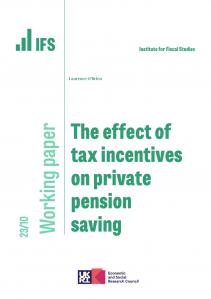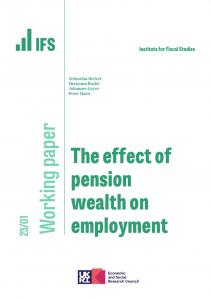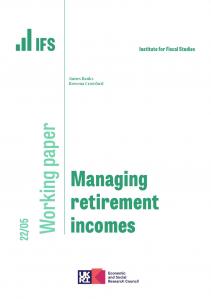In the interim report of the Independent Public Service Pensions Commission, published this morning, Lord Hutton argues for an increase employee contributions (with the exception of those in the armed forces) with longer-term reform recommendations to follow in next year's final report. Even though the report's projections (chart 4.B) suggest that the current arrangements are affordable in the sense that pension payments are set to fall as a share of national income over the next fifty years, the case for further reform appears strong.
The short-term recommendation is for an increase in the amount that members of public service pension schemes have to contribute. Should the coalition Government concur, this could make a useful contribution towards the cuts to spending to be set out in the Spending Review on October 20th. Last year Ireland chose to do something similar with the introduction of a "pension levy" as part of their fiscal tightening. Today's report estimates (paragraph 8.15) that an across the board increase in employee contributions of one per cent of earnings would raise £1 billion, which is the same amount as intended to be saved by the planned cut to child benefit for higher rate taxpayers (announced by Chancellor George Osborne on Monday). Increasing contributions would be very similar to a cut in public sector pay, although it might help provide a better guide to members of the value of the pensions they are accruing. Lord Hutton's report does not indicate how large any increase in contributions should be, instead leaving this decision to the Government.
Today's report does not detail Lord Hutton's recommendations for more fundamental reform to public-service pensions; these will follow in his final report to be published before next spring's Budget. Any such recommendations should consider how cost effectively public service pensions fulfil the role of attracting and retaining the desired calibre of staff in the public sector. In addition to these issues, Lord Hutton has also said that he will consider whether the pensions provide an adequate level of retirement income and whether the distribution of contributions and benefits is "fair". The following features of the current schemes are difficult to justify and reform could potentially enhance value for money for the taxpayer:
- Final salary schemes benefit long-stayers more than short-stayers and are much more generous to those who receive pay increases towards the end of their career than those who do not;
- Reforms introduced in 2007 mean that many who joined before that date are accruing substantially more generous pension entitlements than those who have joined since;
- A fixed Normal Pension Age (NPA) of 65 (or lower) seems inconsistent with continued rising life expectancy and the planned increase in the State Pension Age to 68.
Pension cuts could either be made in such a way as to maintain their average generosity to members or in a way that reduced the overall generosity.
An example of a possible improvement to the structure of defined benefit pensions that could retain the average generosity would be a shift from final salary to career average earnings and an equalisation of NPAs with the SPA, combined with an offsetting increase in accrual rates. Alternatively, compensation for pension cuts could be provided through pay increases. Unfortunately this latter option might prove unattractive in the current circumstances: the unfunded nature of most public-service pension schemes (the most notable exception being the Local Government Pension Scheme) means that pension cuts leads to lower spending (and therefore borrowing) in the future, while increases in public sector pay would increase spending (and therefore borrowing) immediately.
Only pension cuts without full compensation would strengthen the public finances. But this would require the judgment that not only was the structure of public-sector pensions inappropriate but also that the total remuneration package on offer (pay and pensions) was unnecessarily generous to attract and retain the requisite public sector workers. Addressing what level of compensation for any pension cuts is appropriate will be one of the most important and difficult questions Lord Hutton should address in his final report.











